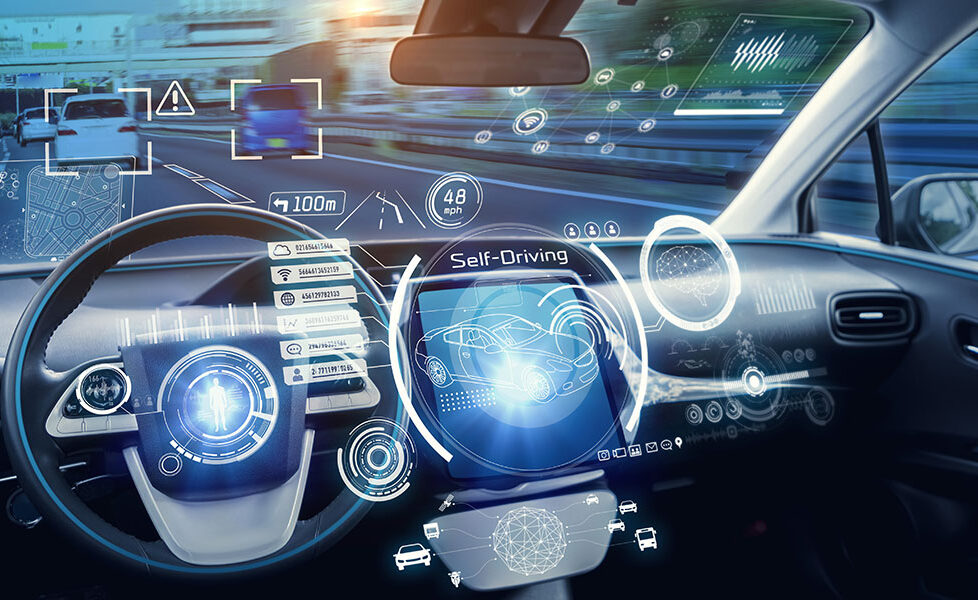The Role of AI in Autonomous Vehicles


One of the main applications of Artificial Intelligence (AI) is autonomous driving. Multiple sensors, including cameras, radars, and lidar, are used in autonomous vehicles to understand their surroundings better and plan their routes. These sensors generate enormous amounts of data, and AVs need fast processing speeds comparable to supercomputers to make sense of the data generated by these sensors.
AV system developers primarily rely on AI, Machine Learning, and deep learning to quickly process enormous amounts of data and train and evaluate their autonomous driving systems. With the help of top artificial intelligence courses, one can quickly get better hands-on ideas and understand the various applications of AI in autonomous vehicles.
According to reports, the automotive AI industry is anticipated to grow at a CAGR of roughly 38.5%, from an estimated $783 million in 2017 to close to $11 million by 2025.
IHS Markit anticipated that, compared to the adoption rate of 8% in 2015, the installation rate of AI-based technologies in new vehicles would increase by 109% in 2025. AI-based solutions will increasingly be seen in new cars, particularly in these two categories: Human-machine infotainment interfaces include speech recognition and gesture detection, eye tracking and driver monitoring, virtual assistance, and natural language interfaces.
Advanced Driver Assistance Systems (ADAS) and autonomous vehicles incorporating sensor-fusion Electronic Control Units (ECUs), radar-based detection units, driver condition evaluation, and camera-based machine vision systems).
Examining some of the anticipated advantages of artificial technology in our daily lives will help us to comprehend how its integration will affect the automotive sector.
● Enhanced Auto Safety
The present generation of automobiles demonstrates how Artificial Intelligence contributes to vehicle safety. Most automobiles have safety features like emergency braking and lane control, which operate through the AI system using cameras and sensors.
● Predictive Driving Capabilities
Even if self-driving cars have safety measures that include predictive driving, the ground-breaking invention deserves its own section. When cars can communicate with one another and exchange data, it is no longer confined to movies.
Artificial Intelligence in cars will be able to respond to situations by making the right decisions with the help of the network broadcasting of information on traffic jams, weather, and road accidents.
● Traffic Control
Traffic is every driver’s worst nightmare. Nobody enjoys being late when attending meetings or going to work, and this frequently results in unclear outcomes because of hurried decisions and a lack of attention to driving laws.
The following are the applications of AI in autonomous vehicles:
Humans use their vision and Intelligence to control the steering, whereas their driverless counterparts use computer vision. Computer graphics are used by driverless automobiles to identify lane markings and follow other moving objects on the road. To successfully monitor their surroundings, most autonomous vehicles require several cameras.
For instance, Tesla outfits its vehicles with eight surround cameras that offer a 360-degree sight of the space around the vehicle, which is approximately 490 feet. Cameras make it possible to perform various functions, including lane finding, estimating road curvature, obstacle identification, classifying stop signs, and detecting traffic lights.
During operation, the vehicle’s central computer receives data from various sensors. Sensors provide:
Some of these sensors can offer a superior perception to an ordinary person. Still, we need robust algorithms that can interpret the real-time data streams generated for this to happen.
Predictive maintenance is described as monitoring and modeling to determine a machine’s status and predict what will fail and when it will fail. It aims to foresee problems rather than deal with those already present. Predictive maintenance can help you save both time and money in this way. Predictive maintenance can be performed using both supervised and unsupervised learning.
Localization is the process through which autonomous vehicles determine their location in the world. Our phones’ GPS capabilities enable them to assist us in finding our way around unfamiliar surroundings. However, more complex algorithms are utilized for automobiles. By comparing the point cloud that the automobile sees to the point cloud that the map possesses, they enable a car to localize itself within a given map with an accuracy of 3.93 inches.
Artificial Intelligence is one of the most rapidly developing and intriguing computer science topics today. The top artificial intelligence courses will provide you with the skills and knowledge required to keep up with this rapidly changing field. You’ll acquire practical experience with state-of-the-art tools and techniques while learning about the most recent AI research, algorithms, and applications. PG Diploma in Artificial Intelligence is an excellent way to start, whether you want to pursue a career in AI or are just interested in being updated with the most recent advancements.
Conclusion
Without a doubt, Artificial Intelligence is a popular and developing technology. It enables machines to replicate the human brain and is expanding very quickly daily. It is becoming a widely sought-after technology among sectors due to its outstanding performance and making human life more manageable.
Future AI-based technologies will increase the value of automobiles by speeding up production, maximizing production capacity, and collecting data while providing a distinctive user experience. Artificial Intelligence will undoubtedly be the future economic development engine for the automobile industry.
In addition to ensuring that a consumer receives the appropriate goods based on their profile, an AI/ML-based system leveraging big data can accurately predict supply-demand volatility. Artificial Intelligence has arrived, and it is changing everything about the vehicle industry, from how we drive to how we interact with them. The good news is that, as an industry, we are not only welcoming this technology with open arms but are also prepared to take advantage of it., and make innovations as we move towards a brighter future.
